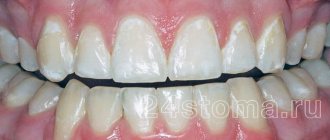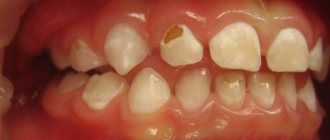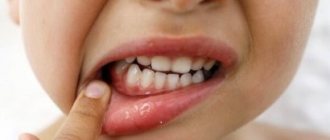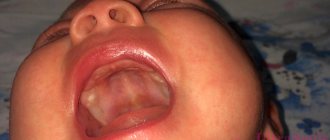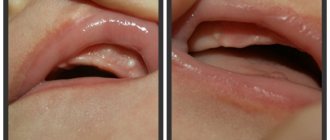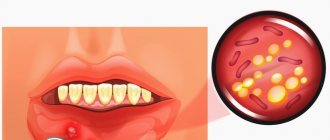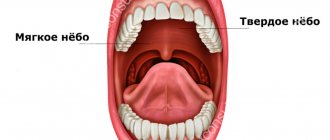Sometimes you can notice chalky-colored stains on your teeth. There can be many reasons for this. And they are all different. Chalky spots usually appear on those areas of the enamel where their mineralization is impaired.
If they are formed due to improper dental hygiene or stains occur due to an unbalanced diet, then such stains can be eliminated with the help of whitening pastes that do not contain fluoride. White spots may appear if tooth enamel begins to flake off.
The disease can develop on one tooth or affect the teeth of the entire dentition. Another cause of chalky spots is fluorosis, in which large amounts of fluoride compounds accumulate in the body.
The mechanism of the problem
The health of dental units is ensured by a number of substances: these are vitamins A, C, E, D, group B, potassium, iron, iodine, magnesium, zinc and others. But the two main elements necessary to maintain the functionality of the jaw are calcium and fluoride.
Due to injury, work in a toxic industry, insufficient hygiene, or the accumulation of pathogenic bacteria on the surface of the enamel, it can lose useful compounds, which is why white spots, dots or stripes appear on the teeth (we will consider the result with a photo below).
What does the pathology look like?
Initially, a very small speck is detected, which is difficult to notice with the naked eye. Over time, the focus of demineralization increases. The affected areas lose their natural shine because the crystalline structure of the substance covering the dentin is destroyed: it becomes porous, darkens and, due to a change in texture, turns into a reservoir for pathogenic microorganisms. At first, such microdestructions are painless, which indicates the need for visual control.
Most often, canines and incisors are affected, but sometimes pathology occurs on molars. It is important to notice it in time - the process is reversible with early diagnosis. If it is neglected, only radical methods of treatment will help (drilling, installing a large filling).
Causes of problems in adults
White spots on tooth enamel can have different etiologies. To make an accurate diagnosis, the doctor examines and interviews the patient: he clarifies how oral care is carried out, whether there were injuries or other prerequisites for the appearance of foci of remineralization.
Initial caries
Whitish matte formations may indicate that the pathological process has begun and will soon make itself felt. The main reason for its development is poor hygiene (a person brushes his or her teeth irregularly, not thoroughly enough, or does not floss). The disease can also be caused by an excess of carbohydrate foods in the diet, especially fast carbohydrates (white bread, sweets). The resulting plaque becomes a breeding ground for bacteria and a good “future reserve” for the formation of caries.
If you start therapy at this stage, you can get by with non-invasive procedures, but the neglected process will lead to the destruction of dentin and, as a consequence, to pulpitis (a diagram of pulp damage can be seen in the illustration).
Traumatic impact
It is not so easy to injure the jaw in everyday life, but there is an exception: often the cause of white spots and stains on the teeth is wearing braces and splints. After removal of the orthodontic structure, foci of demineralization are found on the enamel surface; their occurrence could be avoided by observing dietary restrictions and hygiene.
The root cause of lesions under braces is the accumulation of food debris (especially acidic and carbohydrate-rich foods). This is why doctors advise regularly using an irrigator after installing jaw retainers. The surface areas under the locks are poorly moistened with saliva, which aggravates the situation.
Patients who have not been treated by an orthodontist also have white spots on their teeth. They are associated with a constant load:
- frequent consumption of seeds, nuts and other solid foods;
- bruxism (involuntary clenching of the jaws both during sleep and while awake).
Athletes involved in contact martial arts are also at risk.
Industrial or occupational fluorosis
He can be:
- streaked or spotted (mild form);
- chalky-mottled (moderate severity);
- erosive and destructive (severe course of the disease).
It occurs due to excess fluoride in the patient’s body and also leads to the appearance of chalky or transparent spots, specks and stripes on the teeth. The disease manifests itself in people who have worked for a long time in industries with high fluoride concentrations:
- glass, ceramic, cement;
- woodworking;
- oil producing
Workers of hazardous enterprises are recommended to regularly visit the dentist to identify pathology in the early stages and undergo timely treatment.
Hypoplasia
Many dental diseases in an already born baby are a consequence of the incorrect lifestyle of the expectant mother, lack of vitamins, and poor ecology.
White spots on a child’s baby (less often permanent) teeth often occur due to underdevelopment of the enamel. The foundation for its formation in children is laid during the period of intrauterine development - at the 7th week of pregnancy. Permanent incisors and molars are formed from 5 months to 7–8 years.
The most popular prerequisites for the spread of pathology:
- hypovitaminosis D in the mother;
- toxicosis;
- transferred rubella;
- frequent inflammation of the gastrointestinal tract;
- birth injury.
The problem cannot be prevented with a 100% guarantee, but you can make every effort to reduce the likelihood of its occurrence.
The result of treatment is
A positive result is more often observed when the patient follows all recommendations on oral hygiene, nutrition, and also after completing the full course of treatment. As a result, complete remineralization of the foci of demineralization may occur (or the spots decrease in size), the shine of the tooth enamel will appear, in addition, it will become denser and smoother. A negative result is observed in patients who do not follow all recommendations for oral hygiene, and in such patients, carious defects form over time in place of the white spots.
Treatment of foci of enamel demineralization requires the complete elimination of bacterial plaque and food debris in the oral cavity. This is possible if the patient is willing to floss after every meal and brush their teeth after every meal (while avoiding snacking between meals and drinking sugar-sweetened beverages). In fact, the patient is required to devote only 4-5 minutes to hygiene, 3 times a day. It is also important to exclude easily digestible carbohydrates, starchy, salty, acidic foods and drinks (wine, fruits and fruit juices) from the diet.
→ How to brush your teeth properly
If the patient has only achieved a reduction in the size of the white spots, but they have not disappeared completely, a repeat course of mineralization is prescribed after 1 month, and so on until a lasting positive effect is achieved in the form of complete remineralization of caries at the white spot stage.
What diseases cause white spots on teeth to appear in children?
There are several options here:
- Lack of vitamins or minerals - in this case, in addition to visiting the dentist, it is worth visiting the pediatrician to take tests, prescribe medications or adjust the diet.
- Endemic fluorosis - most often occurs in babies living in industrial areas due to excessive saturation of drinking water with fluorides, if the expectant mother works in hazardous industries during pregnancy. In addition to medical intervention, you should, if possible, reconsider your lifestyle and eliminate the use of fluoridating pastes (they are not recommended for children under 4–5 years of age).
- The hypoplasia described above is a common cause of white spots found on dental photographs.
- Hardly started caries is the most common option.
The pathological process, which can develop in an adult for several years, in the case of a child often occurs rapidly and leads first to darkening of the stripes on the enamel, and then to the formation of large carious cavities. If the situation is neglected, the crown will collapse completely, leaving behind only a small black “hole” in place of the element. In addition to physiological reasons, this also occurs due to the difficulty of carrying out hygiene procedures, especially since older relatives often treat the baby with sweets (soda, sweets, fine flour bread). To avoid complications, it is recommended to visit the dentist with your child every 2-3 months.
List of toothpastes with increased remineralizing potential -
So, for such toothpastes to really have a good remineralizing effect, you need to follow the following rules:
- We brush our teeth after every meal, i.e. 3 times a day,
- Before brushing your teeth, use dental floss every time,
- brush your teeth immediately after eating, and not after 10-20 minutes,
- exclude the consumption of carbohydrates and sugary drinks - in the intervals between meals,
- We exclude from the diet foods and drinks with a high content of acids - some fruits and fruit juices, wine.
The only indulgence in oral hygiene that you can allow yourself is brushing your teeth after your lunch break. In this case, you can refuse to brush your teeth with a toothbrush and toothpaste, but you should definitely floss first and then chew gum for 5-7 minutes. After this, use a mouthwash with nano-hydroxyapatite from the Biorepair brand. But let's get back to toothpastes...
Clinpro Tooth Creme toothpaste –
Clinpro Tooth Creme contains protected tricalcium phosphate + 900 ppm sodium fluoride. Use for a course of 2-3 months, or on an ongoing basis. If the result has been achieved (the white spots have disappeared or decreased), then immediately after the end of its use, we recommend using Colgate Duraphat 5000 ppm toothpaste for 4 weeks to consolidate the result.
Toothpaste “Biorepair PLUS Total Protection” –
Biorepair PLUS Total Protection contains 20% nano-hydroxyapatite (50 to 100 nm in size). Duration of use – from 2-3 months to permanent use. If the result has been achieved, then to consolidate it, it is better to use toothpaste with a high dosage of fluoride for 4 weeks. Optimally – “Colgate Duraphat 5000 ppm”.
Colgate Duraphat 5000 ppm toothpaste –
Colgate Duraphat 5000 ppm is an excellent toothpaste designed to strengthen teeth and provide maximum protection against caries. We do not recommend using it to treat white spots on enamel - as a basic treatment. However, it will be an excellent way to consolidate the results obtained from remineralizing therapy (with the means indicated in the article above). In addition, in the future you can use this toothpaste on an ongoing basis - it protects teeth well from caries (even in patients with irregular oral hygiene).
The occurrence of pathology during the gestational period
Pregnancy is stress for the body and a time during which a woman requires an increased concentration of nutrients in food. The fetus needs minerals and vitamins for the correct formation of all systems and organs, so the expectant mother may experience a deficiency of them. It happens that foci of demineralization occur as a result of toxicosis, when, due to constant nausea, an overly acidic environment is created in the mouth.
If a white spot appears on a pregnant woman’s tooth, this means that it is worth visiting not only a dentist, but also a gynecologist to rule out metabolic disorders and alleviate unpleasant symptoms.
Diagnostics
Diagnostics is an important stage of the examination, with the help of which the doctor will accurately diagnose and determine the treatment method for caries in the spot stage. The dentist conducts a clinical examination, probing, thermal diagnostics and various diagnostic tests.
When probing, a rough enamel surface is determined. Thermal tests are negative, that is, pain does not occur when exposed to cold or hot water. In some cases, radiography is performed to rule out periodontal disease.
Samples are necessary to differentiate caries in the spot stage from hypoplasia, fluorosis and other non-carious defects. Before using dyes, the tooth is cleaned and any dental deposits are removed. The enamel is dried and a special preparation is applied (methylene blue or red, tropeolin, carmine). The stage of caries development and the boundaries of its distribution are determined by the degree of staining of the defect. Non-carious defects are not stained with dyes, so the doctor excludes them.
Main symptoms of diseases
The signs of lesions vary, and the prognosis in the absence of timely medical intervention is also different. The final diagnosis should be made only by the attending physician, but the patient can, based on the nature of the pathological process, make an assumption about the root of the problem.
- If the enamel is injured, the person most likely knows about it - he recently removed braces or the jaw was mechanically damaged. Only the area on which pressure was applied or the part of the tissue hidden under the orthodontic structure is treated.
- If a child or adult has white spots on the front teeth (incisors) and molars, the reason is often the development of caries. Such neoplasms are localized randomly, but quickly progress, turn black, and deepen. The focus of the disease is single or few.
- With fluorosis, chalky or pale yellow stripes appear, which later darken.
- Hypoplasia is diagnosed in children and adolescents - and neighboring elements usually suffer.
How is caries treated in the spot stage?
Treatment of caries at the white spot stage is carried out using several methods:
- Remineralizing therapy. The most popular and effective treatment method, which is carried out at the stage of only the white spot. It involves saturating the affected tissues with microelements and minerals through the application of medicinal substances. Procedures are carried out daily or every other day, the course consists of 10-15 procedures.
- Fluoridation. Treatment consists of saturating the enamel with fluorides, as well as other microelements. Fluorapatites are more durable than hydroxyapatites, thus strengthening the enamel.
- Silvering. The method involves impregnation of carious lesions with a special preparation. During the procedure, silver ions are released, which settle in the enamel and stop the destructive carious process. Currently, the method is used extremely rarely, since it is not able to eliminate caries and stains the teeth in a dark color.
- The Icon technique is the most modern technology that has many advantages. It consists of layer-by-layer application of several drugs to the white spot. The products eliminate the porous layer, remove germs and seal the enamel. In this way, the cavity is filled without the use of boron. The treatment is very effective, painless and simple.
- Grinding. If other methods are ineffective, sanding the stain, usually brown, is used. The dentist, using a special bur or brush, carefully removes the affected tissue, followed by a course of fluoridation and remineralization.
- Classic filling. If treatment with other methods is impossible, filling is used. To do this, the doctor uses a small bur to remove the destroyed tissue, and then restores the tooth with filling materials.
- Physiotherapeutic procedures. Physiotherapy procedures are used as complex therapy: electrophoresis and phonophoresis of calcium gluconate, phosphorus, sodium fluoride and other trace elements.
How is the treatment carried out?
Dental treatment consists of the following stages:
- Examination of the oral cavity, diseased tooth and collection of the patient’s medical history;
- Diagnostics, accurate diagnosis - clinical tests, x-ray diagnostics;
- Choosing the most appropriate treatment method;
- Professional teeth cleaning;
- Prescription of a course of applications, grinding or filling, depending on the method of treatment;
- Strengthening enamel and preventing hyperesthesia;
- Recommendations and advice to the patient after the procedure.
Methods of treating pathology for initial caries
Inflammation at the initial stage is treated without the use of a drill and anesthesia: this is a painless manipulation that prevents damage to dentin, and the enamel can be considered healthy after treatment. In some cases, only the doctor at the appointment sees white spots on the teeth, so it is better to carry out these procedures immediately after identifying the problem.
Remineralization
Remotherapy is the process of artificially saturating tissues with micro- and macroelements. It is also indicated after prolonged use of splints or braces.
Calcium gluconate is most commonly used by dentists. A swab soaked in the solution is applied to the previously cleaned and disinfected jaw and left for exposure for several minutes. Sometimes the procedure requires repetition.
To ensure long-lasting results:
- brush your teeth with a soft brush and low-abrasive toothpaste;
- exclude too cold and hot, spicy, sour foods for a day or two.
Fluoridation
There is significantly more calcium in bone tissue than fluoride. But the latter plays a decisive role in the process of absorption of calcium compounds. The best results are obtained by alternating saturation procedures.
The doctor performs the operation manually using gel, varnish or tampons containing the desired element. After manipulation, it is not recommended to use medicinal pastes for 2 months.
Electrophoresis, infiltration, ozonation
These are more complex, but nevertheless non-invasive or micro-invasive processes that allow you to restore enamel that is beginning to decompose without pain relief using:
- microcurrents delivering the necessary substances (electrophoresis with calcium or fluorine ions);
- ICON lamps, thanks to them the desired material penetrates the pores of the surface, restoring the enamel layer (infiltration);
- gas that disinfects the entire dentition, ridding it of pathogens, followed by the use of a material that prevents the development of caries (ozonation).
The attending physician will offer the patient several options to choose from, and the final decision on what to do if white spots appear on the teeth is made jointly.
Sealing and silvering of enamel in children
Fissures are depressions and grooves on the chewing surfaces, thanks to which the jaws can grind food efficiently. Despite their usefulness, with insufficient care they become a source of inflammation and proliferation of microbes, especially in children who, due to their age, do not yet fully observe hygiene. Considering the fragility of the tissues of a child’s body, this leads to almost instantaneous development of caries. Sealing (filling) is done with a material similar to a filling material.
After manipulation, dentists recommend a coating - for example, with silver nitrate, a bactericide, which prevents further destruction of the units and keeps the oral cavity sanitized.
Dental troubleshooting
If the chalky stains on the teeth are carious in nature or the situation is advanced, you should immediately consult a doctor. The sooner you visit the dentist, the easier and more effective the treatment will be.
The solution to dental problems occurs as follows:
• In case of loss of minerals , a remineralization procedure is performed. It is carried out by applying a protective layer of a special paste, which gradually saturates the enamel with minerals and has a strengthening effect. In case of excess fluoride, the supply of minerals is replenished using electrophoresis and applications.
Teeth restoration procedure is very popular , which whitens the enamel and restores their beauty and health.
• Hypoplasia is treated with silvering or fluoridation , which will preserve baby teeth until permanent teeth appear.
• In severe cases, plates with a special chemical composition are installed .
Therapy and restoration work for hypoplasia
For minor lesions, remineralization can be done; in complex situations, more serious intervention will be required. The problem is rarely localized to the molars and premolars. More often, incisors and canines are underdeveloped. Restoring the enamel in this case is impossible, and the only way out is aesthetic restoration. Depending on the degree of tooth decay, a veneer, crown or filling is placed on it, restoring color and shape.
You will learn in detail how you can restore the beauty of your smile using ceramics from the video:
You may also be interested in
PARODONTAL
Mouthwash ACTIVE
Unique two-part mouth rinse reduces bleeding and inflammation
More about the product
PLUS
Professional toothpaste REMINERALIZATION
Restores tooth enamel, reduces hypersensitivity of teeth and gums and accelerates regeneration of the oral mucosa
Learn more about the product
Preventing the appearance of white spots
If a person is already an adult, it is too late to prevent hypoplasia, but the development of other pathologies can be avoided. To do this you should:
- brush your mouth twice a day, floss after meals, use a medium-hard brush or soft, low-abrasive paste;
- undergo a preventive examination at the dentist 2 times a year, following all recommendations;
- eat well (eat enough vegetables and dairy products);
- in case of confirmed deficiency of nutrients (only in consultation with the doctor), use vitamin and mineral complexes.
Disease prevention
- Carefully perform hygienic procedures for caring for teeth and oral cavity.
- Follow a diet that contains a balance of animal and plant foods rich in vitamins and minerals.
- Avoid consumption of sweet confectionery products and sweet carbonated water.
- Take a multivitamin complex.
- Get your teeth checked regularly by your dentist.
If you find chalky stains on your teeth, you must make an appointment with a dentist, who will help determine the nature of such stains and give recommendations and prescribe a course of treatment.
